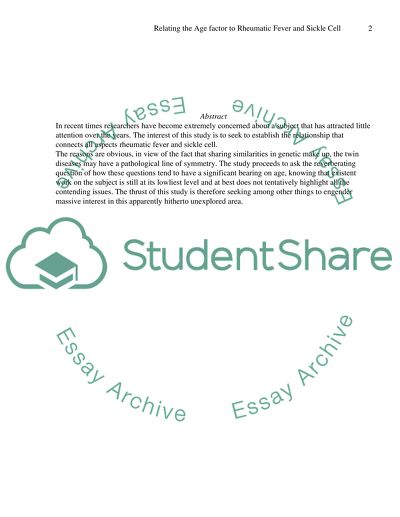Cite this document
(“Age Factor in the Chronic Sickle Cell Essay Example | Topics and Well Written Essays - 1500 words”, n.d.)
Age Factor in the Chronic Sickle Cell Essay Example | Topics and Well Written Essays - 1500 words. Retrieved from https://studentshare.org/health-sciences-medicine/1514518-relating-the-age-factor-to-rheumatic-fever-and-sickle-cell
Age Factor in the Chronic Sickle Cell Essay Example | Topics and Well Written Essays - 1500 words. Retrieved from https://studentshare.org/health-sciences-medicine/1514518-relating-the-age-factor-to-rheumatic-fever-and-sickle-cell
(Age Factor in the Chronic Sickle Cell Essay Example | Topics and Well Written Essays - 1500 Words)
Age Factor in the Chronic Sickle Cell Essay Example | Topics and Well Written Essays - 1500 Words. https://studentshare.org/health-sciences-medicine/1514518-relating-the-age-factor-to-rheumatic-fever-and-sickle-cell.
Age Factor in the Chronic Sickle Cell Essay Example | Topics and Well Written Essays - 1500 Words. https://studentshare.org/health-sciences-medicine/1514518-relating-the-age-factor-to-rheumatic-fever-and-sickle-cell.
“Age Factor in the Chronic Sickle Cell Essay Example | Topics and Well Written Essays - 1500 Words”, n.d. https://studentshare.org/health-sciences-medicine/1514518-relating-the-age-factor-to-rheumatic-fever-and-sickle-cell.


